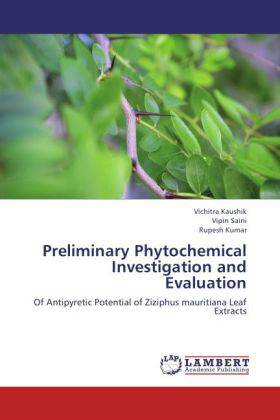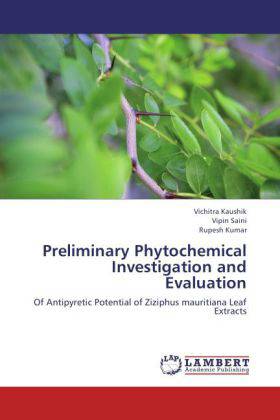
- Afhalen na 1 uur in een winkel met voorraad
- Gratis thuislevering in België vanaf € 30
- Ruim aanbod met 7 miljoen producten
- Afhalen na 1 uur in een winkel met voorraad
- Gratis thuislevering in België vanaf € 30
- Ruim aanbod met 7 miljoen producten
Zoeken
Preliminary Phytochemical Investigation and Evaluation
Of Antipyretic Potential of Ziziphus mauritiana Leaf Extracts
Vichitra Kaushik, Vipin Saini, Rupesh Kumar
Paperback | Engels
€ 48,45
+ 96 punten
Omschrijving
The medicinal value of different species of Ziziphus mauritiana has been known for a long time. There are various reports of this plant having antifungal, anthelmintic, antiasthmatic and antidiabetic activity. No information about it's antipyretic potential is been observed in the literature. In the present study leaves of Ziziphus mauritiana were extracted with five solvents in the order of increasing polarity using a soxhlet apparatus. All the extracts were qualitatively analyzed for their phytoconstituents and for antipyretic potential using Brewer's yeast induced pyretic albino rats of Wistar strain. The results were tested for their significance by using one way ANOVA analysis by comparing with that of the control group at corresponding hours. The results strongly favour the significant antipyretic potential of the petroleum ether extract of Ziziphus mauritiana leaves.has shown significant reduction in body temperature as compared with control group and its effect is comparable to the standard drug paracetamol. It was also observed that the active extract contains steroids and volatile oil. The TLC study of the active extract supports the presence of six major compounds.
Specificaties
Betrokkenen
- Auteur(s):
- Uitgeverij:
Inhoud
- Aantal bladzijden:
- 72
- Taal:
- Engels
Eigenschappen
- Productcode (EAN):
- 9783848494248
- Verschijningsdatum:
- 11/07/2012
- Uitvoering:
- Paperback
- Formaat:
- Trade paperback (VS)
- Afmetingen:
- 152 mm x 229 mm
- Gewicht:
- 117 g

Alleen bij Standaard Boekhandel
+ 96 punten op je klantenkaart van Standaard Boekhandel
Beoordelingen
We publiceren alleen reviews die voldoen aan de voorwaarden voor reviews. Bekijk onze voorwaarden voor reviews.











